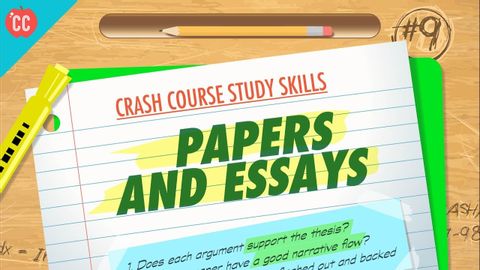論文與論著。速成班學習技巧#9 (Papers & Essays: Crash Course Study Skills #9)
squallriver史嗑爾 發佈於 2021 年 01 月 14 日  沒有此條件下的單字
沒有此條件下的單字- v.t./i.棒;黏貼,張貼;堅持;伸出;忍受
- n. (c.)棍棒,棍枝,枝條
US /ɪˈvɛntʃuəli/
・
UK /ɪˈventʃuəli/
US /ˈprɑsˌɛs, ˈproˌsɛs/
・
UK /prə'ses/
- v.t.用電腦處理(資料);(依照規定程序)處理;處理;流程;加工;理解
- n. (c./u.)(規定的)程序;過程;進程;方法;法律程序;進程
US /ˈkɑnˌtɛnt/
・
UK /'kɒntent/
- adj.滿足的;滿意的
- n. (c./u.)內容;主題;內容;滿意;內容 (數位);含量
- v.t.使…滿足
- v.i.同意

